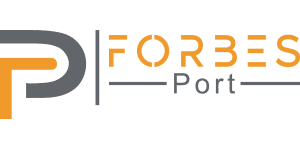Uncovering the Power of Prescriptive Analytics in Optimizing Business Strategies

Insightful knowledge can be obtained by transforming raw data using data analytics. While this may sound strong, the processes involved—which include everything from data cleaning and summarization to understanding why certain conclusions are presented in a particular way—are not as well defined.
All things considered, prescriptive analytics might be the most effective method available to data analysts. This is because it may be used to investigate the relationship between past actions and future outcomes, which can help determine what needs to be done. When applied correctly, prescriptive analytics is the secret to unlocking data’s full potential. In this article, we will go into great detail about prescriptive analytics, its implications, the power of prescriptive analytics in optimizing business strategies, and how data analytics course help aspirants uncover the details of prescriptive analysis.
What is Prescriptive Data Analytics?
Data analytics is becoming the unsung hero of today’s corporate world, helping organizations make better decisions and get more clarity. Businesses today are obsessed with the “how.” How may our tactics be made more effective? How can we anticipate difficulties and change course before they arise? That is how prescriptive data analysis works its magic. It’s not enough to simply predict the future; in this cutthroat era, organizations must also develop and make well-informed decisions that drive them forward. Gaining proficiency in prescriptive analytics is similar to possessing a crystal ball but with data, algorithms, and useful insights to support it. It is the present tense of the future.
Why Does Business Need Prescriptive Analytics?
Prescriptive analytics assists companies in shifting from making decisions based on gut feeling or intuition to ones based on statistical probability and factual information. Prescriptive analytics enables companies to make preventative decisions rather than just reactive ones.
It guides businesses toward more fruitful and long-lasting outcomes by utilizing the power of data and sophisticated analytics.
Businesses may respond to shifting market conditions faster and more efficiently by using data-backed analytics. They can also utilize the results to enhance internal operations and mitigate risk. Prescriptive analytics is a necessity for performance and growth in every industry, business, or even division of a firm, even in cases where human error can have a negative financial impact, like in the financial or healthcare sectors.
Benefits of Prescriptive Analysis
- Better ability to make decisions- Prescriptive analytics offers organizations actionable insights that can improve decision-making by analyzing vast amounts of data. Prescriptive analytics software can precisely forecast future events and suggest certain measures to meet company objectives by spotting patterns and trends. This leads to more profitable and productive outcomes for businesses since it enables them to make data-driven decisions instead of depending solely on intuition or conjecture.
- Increased efficiency- By detecting process bottlenecks and inefficiencies, prescriptive analytics can assist companies in becoming more efficient. Prescriptive marketing analytics uses data analysis to identify areas of resource waste and offer suggestions for process optimization. This can lower expenses, boost output, and increase overall operational effectiveness for businesses.
- Risk mitigation- Prescriptive analytics gives firms the ability to identify possible hazards such as supply chain interruptions, fraud, and security breaches through data analysis and provides recommendations for mitigating those risks. Businesses can avoid possible losses by proactively addressing these issues. Prescriptive analytics helps firms identify hazards before they become serious issues by spotting patterns and abnormalities in the data. By reducing risk, companies can improve consumer loyalty and trust while protecting their finances and reputation.
- Resource management- Through the identification of areas where resources can be distributed more efficiently, this type of analytics aids in the optimization of their resource allocation. This makes use of data analysis to find patterns and trends that indicate over or underuse of resources. Businesses may distribute resources more effectively, decrease waste, and boost production by doing this.
- Supply chain optimization- Prescriptive analytics can help firms optimize their supply chain since it can assess data from multiple sources, including historical sales data, inventory levels, weather forecasts, and transportation data. Businesses can utilize this data to influence decisions about inventory management, production scheduling, and logistics by spotting patterns and trends. This can lower costs, improve delivery times, and boost customer satisfaction. Prescriptive analytics systems can also assist companies in better-anticipating demand and managing inventory levels, which will ultimately lower waste and boost productivity in supply chain operations.
- Marketing optimization- By analyzing data from many sources, such as website analytics, social media interaction, and customer behavior data, it helps businesses improve their marketing tactics. Businesses can maximize their advertising expenditures, identify the best channels and messaging for their target market, and boost consumer engagement and conversion rates by evaluating this data. Prescriptive analytics can also help companies understand the needs and preferences of their target audience, allowing them to tailor their marketing campaigns appropriately.
- Enhanced support services- Prescriptive analytics can assist companies in enhancing customer service by evaluating data from multiple sources, including customer feedback surveys, social media mentions, and customer support encounters. This entails determining where customer satisfaction might be raised and creating focused solutions to deal with prevalent issues and patterns. Ultimately, companies may increase revenue and cultivate strong customer loyalty by utilizing prescriptive analytics to enhance customer service.
Conclusion
In today’s world, prescriptive analytics holds the key to increasing your earnings and guaranteeing the success of your firm. Companies that have already taken this step are benefiting from greater profitability, lower expenses, and enhanced efficiency. They can quickly adjust to shifting market conditions, stay one step ahead of their rivals, and are nimble. Prescriptive analytics is more than just a tool; it’s a revolutionary force that drives innovation and constant development in your company.
Seek advice from a prescriptive analytics service provider to optimize your company’s potential. Take that action now, and watch as the strength of insights derived from data propels your company to new heights. With prescriptive analytics, the future is brighter than it has ever been.




